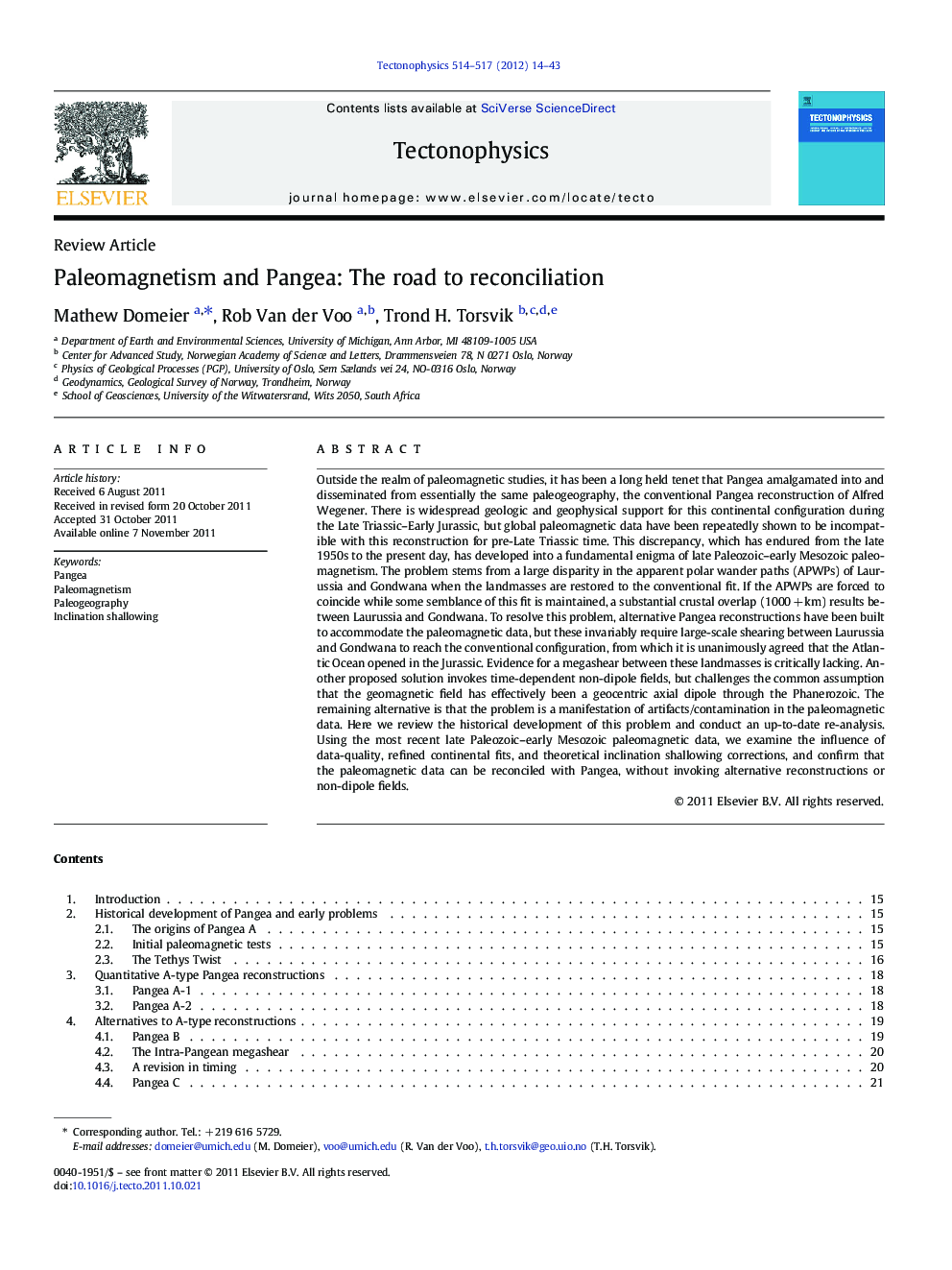| Article ID | Journal | Published Year | Pages | File Type |
|---|---|---|---|---|
| 4692956 | Tectonophysics | 2012 | 30 Pages |
Outside the realm of paleomagnetic studies, it has been a long held tenet that Pangea amalgamated into and disseminated from essentially the same paleogeography, the conventional Pangea reconstruction of Alfred Wegener. There is widespread geologic and geophysical support for this continental configuration during the Late Triassic–Early Jurassic, but global paleomagnetic data have been repeatedly shown to be incompatible with this reconstruction for pre-Late Triassic time. This discrepancy, which has endured from the late 1950s to the present day, has developed into a fundamental enigma of late Paleozoic–early Mesozoic paleomagnetism. The problem stems from a large disparity in the apparent polar wander paths (APWPs) of Laurussia and Gondwana when the landmasses are restored to the conventional fit. If the APWPs are forced to coincide while some semblance of this fit is maintained, a substantial crustal overlap (1000 + km) results between Laurussia and Gondwana. To resolve this problem, alternative Pangea reconstructions have been built to accommodate the paleomagnetic data, but these invariably require large-scale shearing between Laurussia and Gondwana to reach the conventional configuration, from which it is unanimously agreed that the Atlantic Ocean opened in the Jurassic. Evidence for a megashear between these landmasses is critically lacking. Another proposed solution invokes time-dependent non-dipole fields, but challenges the common assumption that the geomagnetic field has effectively been a geocentric axial dipole through the Phanerozoic. The remaining alternative is that the problem is a manifestation of artifacts/contamination in the paleomagnetic data. Here we review the historical development of this problem and conduct an up-to-date re-analysis. Using the most recent late Paleozoic–early Mesozoic paleomagnetic data, we examine the influence of data-quality, refined continental fits, and theoretical inclination shallowing corrections, and confirm that the paleomagnetic data can be reconciled with Pangea, without invoking alternative reconstructions or non-dipole fields.
